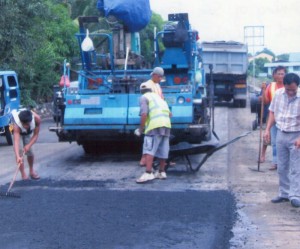The government is spending P29 billion—P12 billion this year and P17 billion in 2014—on a tourism infrastructure program that will connect tourist spots to major roadways.
The program is being implemented by the departments of tourism and of public works and highways. “DPWH will be building roads in areas identified in the national tourism plan in order to improve the travel experience for tourists. This is the first time that the government has set a dedicated budget for tourism infrastructure,” Tourism Secretary Ramon Jimenez Jr. told reporters. “We want to connect tourism areas as much as we can so tourists can have a fun experience.”
Jimenez said the Philippines was on track to hitting its foreign tourist arrivals target of 5.5 million for 2013. Domestic tourism, however, is seen to exceed the target 47 million for 2013. “It’s about the halfway mark for international arrivals. For the domestic market, I think it just keeps growing,” he said.
The tourism official said that during the Holy Week alone, the agency recorded about three million domestic tourists.
Aside from improving road conditions in tourism areas, the DOT is also monitoring the development of hotels and other establishments catering to tourists.
“So far we seem to have enough hotel developments to keep pace with tourism growth,” Jimenez said.
The opening of new flights in remote areas helped boost tourism and lessen seasonality in domestic travel and utilities such as water districts have much room for growth as well, Jimenez added.
“Boracay, for example, no longer has an off-season or low season. What happens is that domestic tourism tends to grow just as foreign tourism tapers during the rainy season,” Jimenez said.
It is not only tourism areas that are enjoying more popularity but also travel activities such as diving. Jimenez said that these days, tourists might come to the Philippines not just to go to one area but to go on a tour for a particular activity such as diving, for which we have many suitable areas all over the country.
Tourism is one of the “low-hanging fruits” identified by the National Economic and Development Authority in the Philippines’ development plan from 2011 to 2016. The sector is expected to readily generate investments and create jobs to help the economy expand at an average 7 to 8 percent until 2016.
